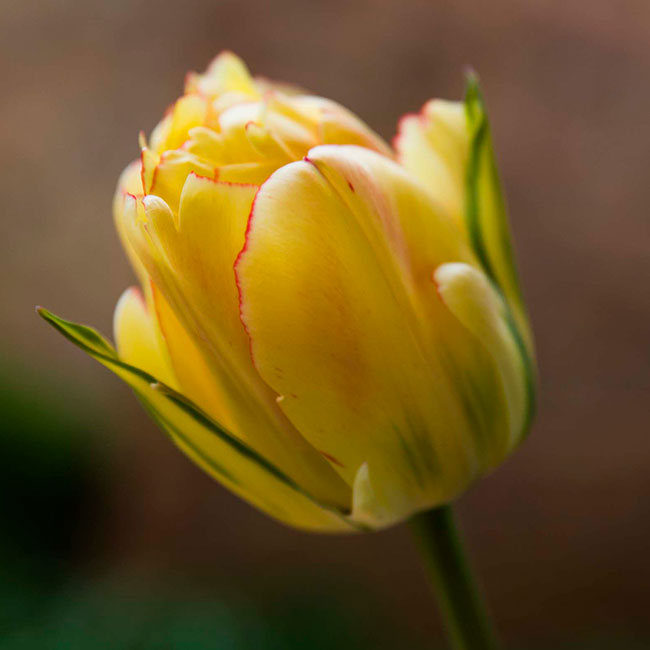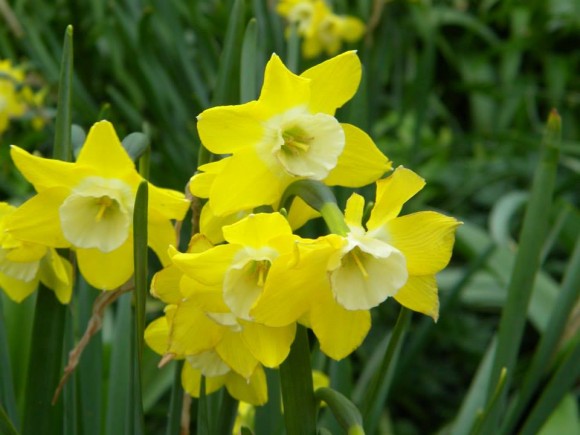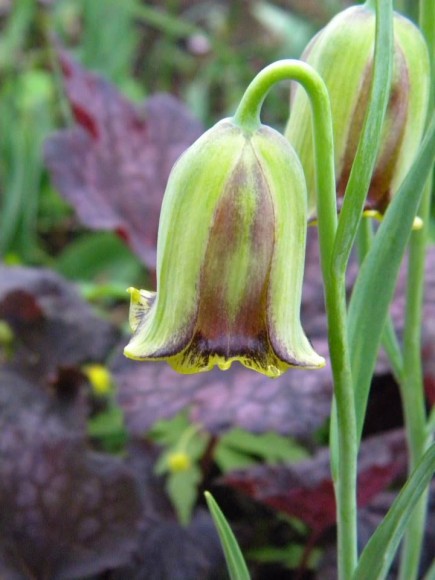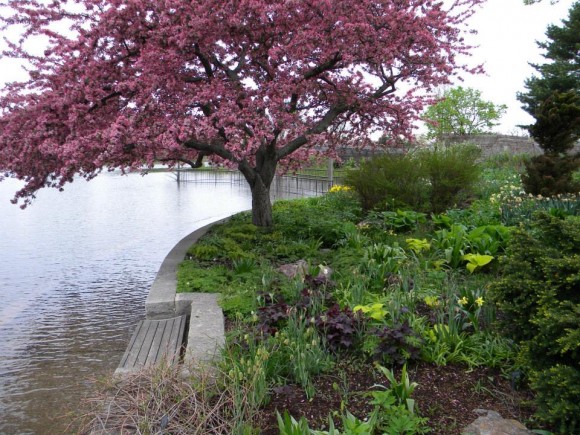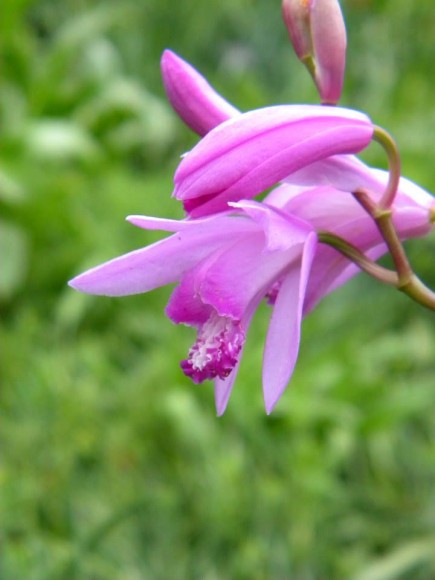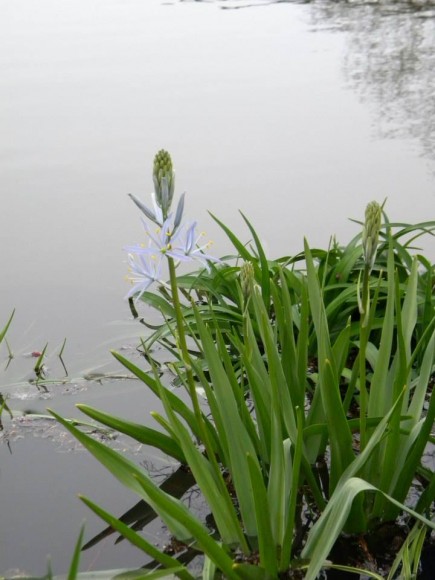In just over a month, we’ve gone from having only a handful of small blooms to a lush display of thousands of blooms in every shape and size. Thanks to several warm days, the annual display beds pushed forth to be in their prime just in time for Mother’s Day last weekend.
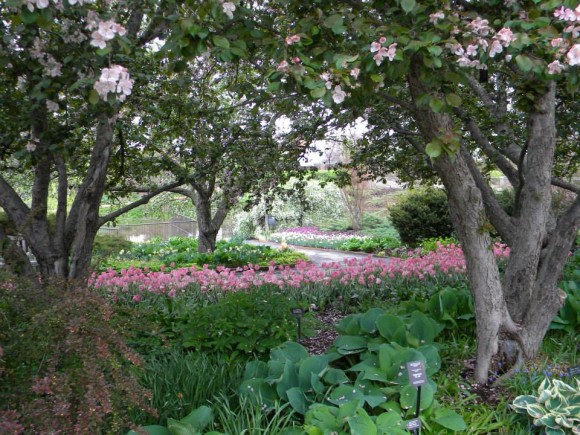
Those warm days also meant the end of the main daffodil season, leaving us with just a few of the late-blooming varieties such as Narcissus ‘Dickcissel’, a unique jonquil-type daffodil with dark yellow flowers and a white cup.
The real star of the late spring garden though, are the tulips. As if by magic, more than 5,000 tulips in our annual displays started blooming overnight. Doubles such as Tulipa ‘Orange Angelique’ and Tulipa ‘Foxtrot’ add unique texture alongside bold colors like Tulipa ‘Queen of the Night’ and Tulipa ‘New Design’.
In addition to these showy giants, there are more subtle species tulips adding pops of color throughout the garden. Tulipa batalini ‘Apricot Jewel’ adds spots of warm yellow to lighten up a planting of dark-leaved Cotinus coggygria ‘Royal Purple’, Camassia leichtlinii, and Allium aflatunense. These species tulips are often better perennializers, making them great additions to the garden, as long as they’re protected from rodents.
In addition to all these big, showy bulbs, there are many that require a closer look.
This bed might look like it’s mostly perennials, but if you stop and look you’ll see a sweep of Fritillaria acmopetala and Fritillaria uva-vulpis, along with a groundcover of the tuberous Anemone ranunculoides, and several varieties of Narcissus.
We’re currently experiencing elevated lake levels, which gives us an opportunity to show that there are at least a couple of bulbs that will survive standing water for a period of time: Bletilla striata and Camassia.
Bletilla striata is a hardy ground orchid native to China and Japan that is very tolerant of saturated soils during the growing season. (However, it should never be allowed to sit in water in the winter.)
Camassia are native to the Pacific Northwest and naturally grow in wet meadows. This makes them a terrific bulb for gardeners who experience seasonal flooding or have areas with poor drainage. The tall blue spikes of flowers provide a welcome dose of color after your main spring bulbs are finished blooming; the plants also are long-lived.
©2014 Chicago Botanic Garden and my.chicagobotanic.org

